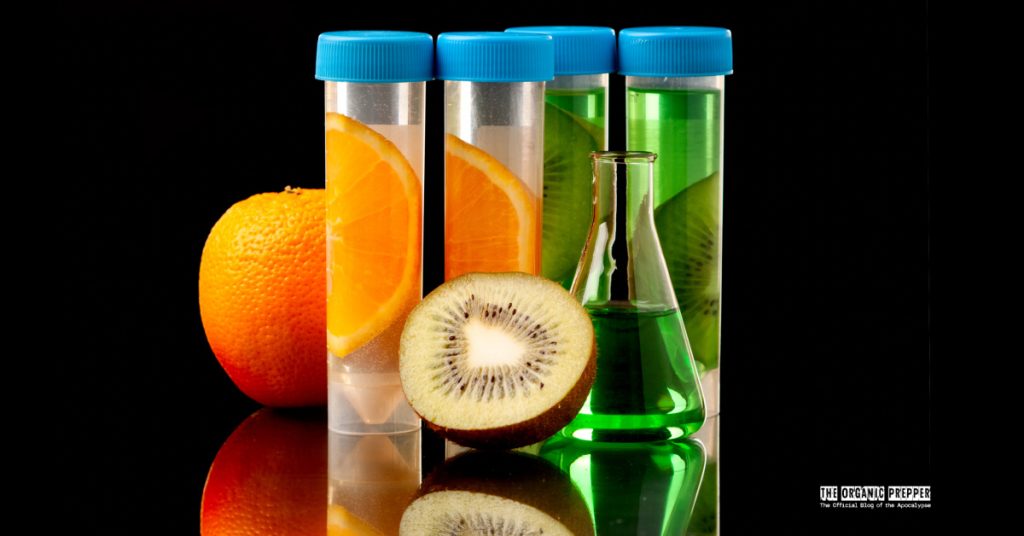by Daisy Luther, The Organic Prepper:

We’ve all heard about lab-grown meat. But have you heard about lab-grown fruit?
In 2018, Finnish scientists discovered they could create plant cell cultures that were nutritious and delicious, according to taste testers. They have produced pleasant-tasting cell culture lines that can be added to things like smoothies or jam. They’re not at the point yet where they can produce apple slices you could toss in a baggie for a snack, but that is the end goal, and researchers around the world are convinced it’s possible.
TRUTH LIVES on at https://sgtreport.tv/
How do they grow fruit in a lab?
Growing a fruit from cell cultures in a laboratory involves four steps:
- Step 1: Multiplication—This is where stem cells are taken from the meristem of a desired fruit plant and then multiplied.
- Step 2: Induction of flowering in multiplied stem cells—This is currently the biggest technological hurdle.
- Step 3: Induction of fruit production—This can be done using organic compounds, rather than traditional pollination.
- Step 4: Growing the fruit—This part consists of providing the growing fruit with the optimal nutrients needed for development.
These projects involve cell culturing. Lots of foods like to call themselves “lab-grown” for the novelty factor. Scientists tout the Cosmic Crisp apple as being “lab-grown” because the original development took place in a laboratory. But Cosmic Crisp apples are grown on trees, outdoors, in the sunshine, just like any other apple you’d eat.
That’s not what we’re talking about here with truly cell-cultured fruit. The technology for this is quite advanced and so far, scientists have not been able to come up with anything that actually looks like a piece of fruit. The ultimate goal is to grow edible-parts-only pieces of fruit. So apples without cores, citrus without peels, and so on.
Given the technical difficulty and expense in development, you may wonder, why bother? There is a big population that has an ethical problem with killing animals for food, but the group of people with moral qualms about plucking an apple from a tree is vanishingly small.
Additionally, livestock rearing is pretty foreign to the average urban or suburban dweller. Growing your own fruits and veggies isn’t. Neighborhoods all over the country are dripping with fruit at certain times of the year. I feed lots of dinged neighborhood fruit to my pigs because homeowners literally can’t process it.
So, what’s the official excuse for these high-tech expenditures?
New Zealand’s Newsable discusses this with Ben Schon, Senior Scientist with the New Zealand Plant and Food Research. He sees lab-grown fruit as an additional source of food as the world’s population expands, not as a replacement for traditional agriculture but a supplement to it. Dr. Schon is a firm believer in man-made climate change and coming problems with overpopulation. He sees developing the technology to produce food in closed environments as a sort of hedge for traditional agriculture in case of climate disaster and thinks it may be more sustainable in the long run.
Lucas van der Zee, horticulture and product physiologist at Wageningen University in the Netherlands, sees growing only edible fruits in laboratory environments as a way to remove land from agricultural use. His Fruit of Knowledge project aims to grow only the edible portions of fruit in laboratory environments with the express purpose of allowing farmland to revert to its native state.
Proponents of this technology, in general, see it as a way to avoid food wastage. Why have a whole apple tree with all those leaves and branches when you really just want the fruit?
(Never mind the fact that the trees are beautiful, provide shade, and smell heavenly when in bloom. But technocrats don’t like to deal in intangibles.)
Avoiding food wastage is indeed an admirable goal, but why not pump more money into home economics classes, rather than shutting them down for ever more STEM courses that most high schoolers won’t use anyway?
Treating home economics as an important life skill and imparting the values associated with thrift and a happy, comfortable home would go a long way toward fixing many of society’s ills. Thrifty adults waste very little food. Older people who grew up broke are often full of ideas for how to use food before it goes bad. But the government seems to have zero interest in any solutions that involve a confident, responsible citizenry. All solutions must be profitable for favored industries.
So, again, why?
Is lab-grown fruit just about the money?
Yeah, but it’s a LOT of money. In President Biden’s Bold Goals for U.S. Biotechnology and Biomanufacturing report released in March, he promotes food and agriculture innovation, and as we discussed in our article here, an emphasis on lab-grown food will be part of that. Between taking market share away from traditional farmers and the patents that will probably be involved, the favored biotech industry will see nice new revenue streams if this technology moves forward.
Cell-cultured food products could also be a convenient vector for getting mRNA into food. We’ve discussed the efforts to grow heads of lettuce with mRNA vaccines in them. Research is being done on vaccines that can be inhaled.
I’m sure this sounds crazier than it should, but the fact is that powerful entities, including various governments and large industries, are trying to get mRNA into absolutely everything.
Read More @ TheOrganicPrepper.ca



